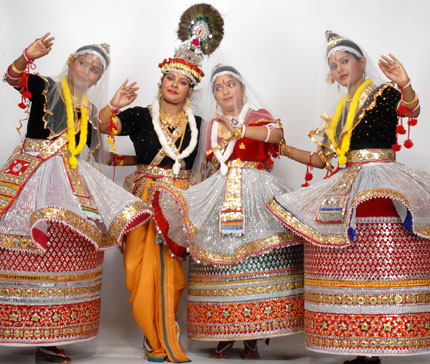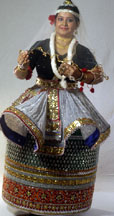|
www.baisalichalormi.com |
 |
Manipur & Manipuri
Dance
Manipur, the small North-eastern state of
India is formed together by nine hills. It
is an oval-shaped alluvial valley which
tilts gradually towards the south. Manipur is
best known today for its unique classical
dance form, the Manipuri Dance. Of all the 7
classical dances of India, Manipuri is
probably the most graceful for its soft,
suitable, flowing body movements. Like most
other classical Indian dance forms, Manipuri
Dance also began in the temples and is still
performed today in the temples as a part of
rituals.


The
dance form reflects the scenic beauty of the
place, myths related to Manipur, the
religion and social life of its people, the Manipuris.
The Manipuris had their own Tibeto-Burman
religion till 17th century, but since 18th
century with the advent of Vaishnavism
(worship of Vishnu) in Manipur, the
Manipuris adopted Vaishnavism as their
religion and even today they maintain a
unique harmony between the two religion in
their daily lives. And the daily life is inseparable from dance and music as every
occasion of their lives is incomplete
without dance and music. Dance and Music are an integral part of lives of Manipuris.
The history of Manipuri dance is very old
and dates back even before 33 AD with the
creation of Heaven and Earth. The Classical
Manipuri Dance has four aspects , namely
Thang-ta (the rutualistic Martial Art-form
of Manipur ) , Lai - Haraoba (the Tantric
form) , Sankirtan (the collective prayer)
and Rasleela (the divine love-play of Lord
Krishna withRadha and gopis the milk-maids
of Vrindavan) . The Thang-ta and Lai-Haraobatradition
belong to Pre-Vaishnavite period of Manipur
ie ,the period till 17th century , while
Sankirtan and Rasleela belong to Vaishnavite
period ,ie the period starting from 18th
Century onwards" .
|